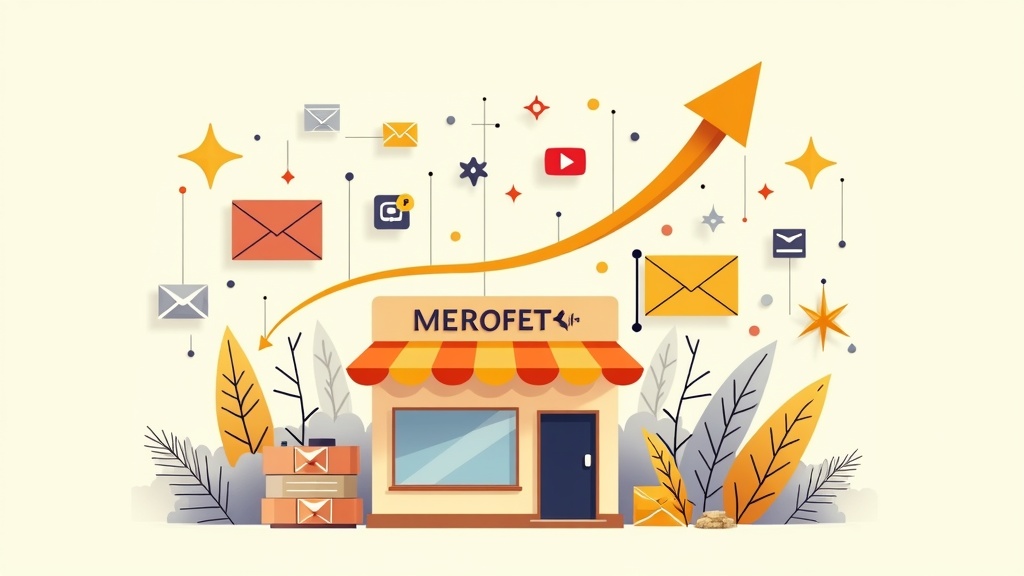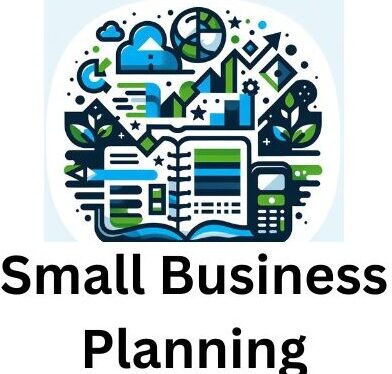Small business marketing isn’t always smooth sailing, but it’s very doable with the right approach. Anyone running a small business knows how crowded the marketplace can feel. Smart marketing strategies make a real difference, helping businesses not just survive but actually grow and stay profitable for the long run. I’ll break down practical strategies and tactics that help small businesses thrive, side step failure, and keep moving forward.

Why Marketing Matters for Small Businesses
Getting noticed is a major challenge when you’re just starting out or working with a limited budget. Good marketing gives a boost to brand awareness, wins over new customers, and creates loyalty with those you already have. According to research shared by the U.S. Small Business Administration, about 20% of small businesses close within their first year, often because they don’t reach enough customers or make enough sales. A strong marketing plan pumps up visibility and increases those odds of sticking around for years to come.
Big brands have huge teams and massive budgets, but small business marketing doesn’t need to be complicated or expensive. It’s really about getting in front of the right people, putting your message out clearly, and being consistent. Social platforms, search engines, and even local events all serve as great avenues for driving growth and reducing your risk of failure.
Getting Started: Laying the Groundwork for Marketing Success
Building a solid marketing foundation sets you up for better results down the road. Before getting into ads or social media campaigns, take time to figure out the basics. Here are a few key areas worth focusing on:
- Know Your Audience: Understand who your ideal customers are, what needs they have, and where they spend their time online. Create a simple “buyer persona”—a snapshot of your perfect customer, including age, interests, habits, and challenges.
- Clarify Your Message: Lock down what makes your business special. Why should someone pick you over a competitor? This is your unique selling proposition (USP).
- Choose the Right Channels: Focus on just a couple of places where your audience actually hangs out. This could mean Facebook, Instagram, Google or even local community groups.
A clear foundation helps small businesses avoid wasted time and budget down the road. When you lock in these basics, every marketing move you make is more targeted and effective, saving you resources and boosting your results over time.
Actionable Marketing Strategies for Small Businesses
With the basics in place, you can start rolling out specific strategies. My experience with small business owners has shown that the following methods often deliver good results. Plus, they’re budget friendly and pretty straight forward to put to work.
- Build a Simple, User Friendly Website: A website acts as your online business card and storefront. Put to work easy website builders like Wix, Squarespace, or WordPress for a professional look without needing to hire a developer. Make sure visitors can quickly find out what you do, how to contact you, and how to buy from you.
- Focus on Local SEO: Make sure your business shows up in local searches by claiming your Google Business Profile, encouraging customer reviews, and keeping your name, address, and phone number the same every where online. This is key for driving newbies through your door.
- Make the Most of Social Media: Pick one or two networks that fit your audience. Post helpful content, show behind-the-scenes peeks, and get involved with your followers. Consistency matters more than frequency here. Eye-catching images or simple videos can set you apart.
- Use Email Marketing: Collect customer emails through your website and send regular (but not spammy) updates, special offers, and news. Tools like Mailchimp or ConvertKit make this easy and affordable. A simple thank-you or birthday offer goes a long way toward building loyalty.
- Form Partnerships and Team Up: Local teamwork—like cross promotions or joint events—can reach new customers and keep your marketing costs down. For example, a cafe and bookstore could offer a combined discount or host a shared event to attract both sets of customers.
Mixing and matching these strategies helps you reach more people with less wasted effort. Focus your energy on what best fits your business model and customer base.
Tips to Avoid Common Marketing Pitfalls
Many small businesses make the same missteps, and I’ve seen a few of these first hand. Steering clear of them helps you save time and money—and avoid quite a few headaches.
- Don’t Try to Do Everything: Spreading efforts too thin across all social platforms and tactics means nothing gets the attention it needs. Pick a couple of high-impact channels and nail them.
- Track What Works: Setting up basic analytics lets you see which efforts pay off, so you can double down on what’s working and cut what isn’t. Just a simple spreadsheet is enough to track key numbers at first.
- Budget Wisely: Make sure your marketing spends fit your overall business plan. Test out low-cost strategies first before jumping into pricier campaigns that could eat into your cash flow.
Tracking and Measuring Results
Even simple tracking helps guide smart decisions. For instance, keep tabs on how many people visit your website, where your online leads come from, or how many people use promo codes from social posts. Tools like Google Analytics, Facebook Insights, or spread sheets let you make changes early if something isn’t working. That’s saved me and the folks I’ve worked with a lot of money over time. Checking trends every month helps steer your next moves with confidence.
Smart Use of Technology and Automation
Tech tools save time and give a boost to results, even for small operations. Scheduling tools like Buffer or Hootsuite help keep your social content running when you’re buried in other work. Automated emails ensure new customers get a welcome note or follow-up after buying, without you remembering to hit send.
Some point-of-sale apps and customer relationship management (CRM) systems automatically store customer info, making it easy to run loyalty programs or send targeted offers. This isn’t about losing the personal touch but about catching every growth opportunity and keeping relationships alive long-term. That’s where Pipedrive shines — a CRM built by sales experts to help you track every interaction, nurture loyalty, and never miss a follow-up. 👉 Try Pipedrive free today and see how expert tools simplify customer growth. Just click on the link to get things started with Pipedrive.
Creative Tactics That Make a Difference
Doing something a bit different is often how to make small businesses stand out from the crowd. Here are approaches I’ve seen work well in real life:
- Host Workshops or Classes: If your business is local, offering a free class or workshop lets people check out your space and get a feel for what you do in a relaxed setting. A yoga studio, for instance, could run a weekend beginners’ session.
- Run Contests or Giveaways: Social contests like sharing a post or tagging a friend quickly get your business in front of new eyes. Prizes don’t need to be big—the chance to win brings a lot of activity your way.
- Create Useful Content: Writing blog posts, making short videos, or sharing tip sheets related to your services builds trust and attracts people actively looking for answers. Content can be as simple as “5 Ways to Tidy a Small Kitchen”—helpful, not pushy.
- Ask for and Showcase Reviews: Good reviews on Google, Yelp, or Facebook make a huge difference. Don’t hesitate to ask happy customers for a review and display the best ones on your site or social feeds for everyone to see.
Practical Examples from Real Small Businesses
These real-world examples show how the right strategy can bring marketing to life:
- Local Bakery: A bakery I worked with started sharing weekly behind the scenes Instagram stories, showing the early morning baking process and asking customers to vote on the next “flavor of the week.” Within two months, foot traffic and sales both went up.
- Service Business: A home cleaning company built a straight forward website with a booking form and put a lot of focus on reviews. They ran a referral program with discounts for both the referrer and the new customer, and word-of-mouth grew quickly.
- Online Store: A family-run online shop selling handmade soaps offered free shipping to first-time email subscribers and used email marketing to remind people about restocks. This grew their customer list and brought people back, without much spent on ads.
Frequently Asked Questions
Here are some questions I often hear about small business marketing:
Question: How much should I spend on marketing?
Answer: There isn’t a set amount, but many businesses start by setting aside about 5 to 10 percent of expected revenue. Track your return and tweak things as you learn what pays off most.
Question: Which social platform is best for my business?
Answer: It depends on your target audience and industry. Instagram works great for visual products, Facebook is solid for local services, and LinkedIn is best for business-to-business. Pick the platform where your customers are most active.
Question: Do I need a blog or content marketing strategy?
Answer: You don’t have to go big all at once. Even sharing occasional articles, tips, or videos for your audience can grow your reputation and attract leads over time.
Wrapping Up
Marketing is always switching up, but small businesses that adapt and keep reaching out in real, practical ways can build loyal followings and keep growing strong. Don’t worry about doing everything at once. Focus on what works best for you, your team, and your customers. Consistency, creativity, and trying new things all add up when you want your business to thrive for years to come.
Here’s a little transparency: Our website contains affiliate links. This means if you click and make a purchase, we may receive a small commission. Don’t worry, there’s no extra cost to you. It’s a simple way you can support our mission to bring you quality “Business Planning content.”

Hi there. I’ve worked with small teams trying to grow without burning through their limited budgets, and most of what’s written here rings true, especially the part about consistency over complexity. Too many small businesses want to “go viral” when they just need to show up consistently where their audience already is.
I wonder; how then can a small business balance automation with the personal touch that builds trust? Tools like Pipedrive or Hootsuite are amazing for efficiency, but I’ve seen some businesses lose that human connection when everything feels automated. I don’t know about you, but that’s what I found out.
Also, what’s your take on storytelling as a marketing tool for small brands? In my experience, when a business owner shares their why, and not just their products, then it turns ordinary customers into loyal fans. Would you agree that authenticity is now the strongest marketing currency for small businesses? What do you think?
Let me know what you think.
John
Thanks for the comment.
I agree that story telling is very important. It backs up what is being said with real world examples.
Thanks for sharing these smart marketing strategies for small businesses. There are many that I can immediately apply to my business. We have recently launched a new business and are focused on brand awareness. I see that once we have the right message, we must select the proper channels to maximize our results. Your suggestions about forming partnerships make sense, and we are currently in the process of doing that. You have provided many useful suggestions, and I will save your article for future reference and to share.